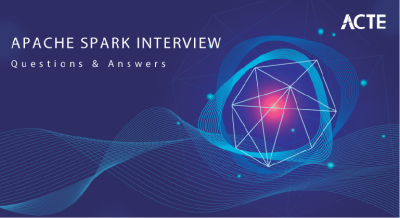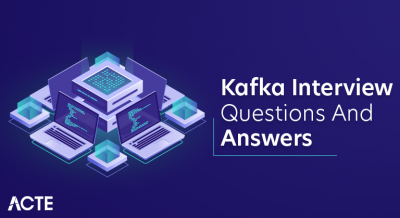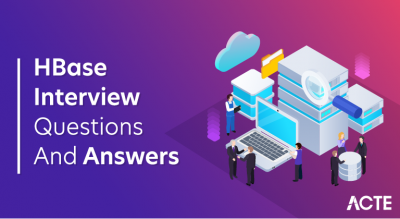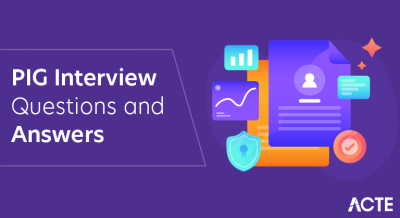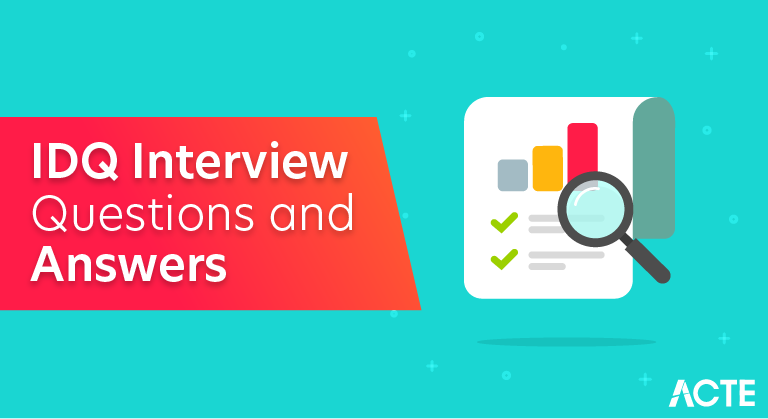
- These IDQ Interview Questions have been designed specially to get you acquainted with the nature of questions you may encounter during your interview for the subject of IDQ As per my experience good interviewers hardly plan to ask any particular question during your interview, normally questions start with some basic concept of the subject and later they continue based on further discussion and what you answer .
- We are going to cover top 100 IDQ Interview questions along with their detailed answers.
- We will be covering IDQ scenario based interview questions IDQ interview questions for fresher’s as well as interview IDQ questions and answers for experienced.
Q1. What is IDQ?
Ans:
IDQ is a feature of AWS which allows you to configure and automatically provision and spin-up new instances without the need for your intervention.
Q2. What are the different types of cloud services?
Ans:
Different types of cloud services are:
- Software as a Service (SaaS)
- Data as a Service (DaaS)
- Platform as a Service (PaaS)
- Infrastructure as a Service (IaaS)
Q3. What is Amazon S3?
Ans:
Amazon S3 (Simple Storage Service) is an object storage with a simple web service interface to store and retrieve any amount of data from anywhere on the web.
Q4. What is SimpleDB?
Ans:
It is a structured data store that supports indexing and data queries to both EC2 and S3.
Q5. What is an AMI?
Ans:
AMI (Amazon Machine Image) is a snapshot of the root filesystem.
Q6. What is the type of architecture, where half of the workload is on the public load while at the same time half of it is on the local storage?
Ans:
Hybrid cloud architecture.
Q7. Can I vertically scale an Amazon instance? How do you do it?
Ans:
- Yes. Spinup a new larger instance than the one you are running, then pause that instance to detach the root EBS volume from this server and discard.
- After that, stop the live instance and detach its root volume.
- Note the unique device ID and attach that root volume to the new server, and start again.
- This way you will have scaled vertically.”
Q8. How can you send a request to Amazon S3?
Ans:
You can send requests by using the REST API or the AWS SDK wrapper libraries that wrap the underlying Amazon S3 REST API.
Q9. How many buckets can be created in AWS by default?
Ans:
By default, 100 buckets can be created.
Q10. Should encryption be used for S3?
Ans:
Encryption should be considered for sensitive data as S3 is a proprietary technology.
Q11. What are the various AMI design options?
Ans:
Fully Baked AMI, JeOS (just enough operating system) AMI, and Hybrid AMI.
Q12. What is Geo Restriction in CloudFront?
Ans:
Geo restriction, also known as geoblocking, is used to prevent users in specific geographic locations from accessing content that you’re distributing through a CloudFront web distribution.
Q13. Explain what is a T2 instance?
Ans:
T2 instances are designed to provide moderate baseline performance and the capability to burst to higher performance as required by workload.
Q14. What is AWS Lambda?
Ans:
AWS Lambda is a compute service that lets you run code in the AWS Cloud without provisioning or managing servers.
Q15. What is a Serverless application in AWS?
Ans:
The AWS Serverless Application Model (AWS SAM) extends AWS CloudFormation to provide a simplified way of defining the Amazon API Gateway APIs, AWS Lambda functions, and Amazon DynamoDB tables needed by your serverless application.
Q16. What is the use of Amazon ElastiCache?
Ans:
Amazon ElastiCache is a web service that makes it easy to deploy, operate, and scale an in-memory data store or cache in the cloud.
Q17. Explain how the buffer is used in Amazon web services?
Ans:
The buffer is used to make the system more robust to manage traffic or load by synchronizing different components.
Q18. Differentiate between stopping and terminating an instance.
Ans:
- When an instance is stopped, the instance performs a normal shutdown and then transitions to a stopped state.
- When an instance is terminated, the instance performs a normal shutdown, then the attached Amazon EBS volumes are deleted unless the volume’s deleteOnTermination attribute is set to false.
Q19. Is it possible to change the private IP addresses of an EC2 while it is running/stopped in a VPC?
Ans:
The primary private IP address cannot be changed. Secondary private addresses can be unassigned, assigned or moved between interfaces or instances at any point.
Q20. Give one instance where you would prefer Provisioned IOPS over Standard RDS storage?
Ans:
When you have batch-oriented workloads.
Q21. What is AWS?
Ans:
- It is the acronym for Amazon Web Service.
- It is a comprehensive, evolving cloud-computing platform of Amazon.
- It is also known as Infrastructure as a Service (IaaS).
Q22. What is the boot time for an instance store backed instance?
Ans:
The boot time for an Amazon Instance Store -Backed AMI is less than 5 minutes.
Q23. Will you use encryption for S3?
Ans:
Yes, I will, as it is a proprietary technology. It’s always a good idea to consider encryption for sensitive data on S3.
Q24. What is Identity Access Management and how is it used?
Ans:
- It is a web service, which is used to securely control access to AWS services.
- Identity Access Management allows you to manage users, security credentials, and resource permissions.
Q25. Explain the advantages of AWS’s Disaster Recovery (DR) solution.
Ans:
Following are the advantages of AWS’s Disaster Recovery (DR) solution:
- AWS offers a cost-effective backup, storage, and DR solution, helping the companies to reduce their capital expenses
- Fast setup time and greater productivity gains
- AWS helps companies to scale up even during seasonal fluctuations
- It seamlessly replicates on-premises data to the cloud
- Ensures fast retrieval of files
Q26. How do you send requests to Amazon S3?
Ans:
- We can achieve this by using the REST API or the AWS SDK wrapper libraries.
- These elements wrap the underlying Amazon S3 REST API.
Q27. What is DynamoDB?
Ans:
- DynamoDB is a fully managed proprietary NoSQL database service, supporting key-value and document data structures.
- It can be used when a fast and flexible NoSQL database with a flexible data model and reliable performance is required.
Q28. What is Redshift?
Ans:
- Redshift is a petabyte size data warehouse service by Amazon.
- It is easy, cost-effective, and scalable, and can be fully configured to analyze your entire data with the existing business intelligence tools.
Q29. Which data centers are deployed for cloud computing?
Ans:
There are two data centers in cloud computing, one is Containerized Data centers, and another is Low-Density Data Centers.
Q30. Which AWS services will you use to collect and process e-commerce data for near real-time analysis?
Ans:
Following are the AWS services will be used to collect and process e-commerce data for near real-time analysis:
- Amazon DynamoDB
- Amazon ElastiCache
- Amazon Elastic MapReduce
- Amazon Redshift
Q31. What is SQS?
Ans:
- Simple Queue Service (SQS) is a distributed message queuing service that acts as a mediator for two controllers.
- It is a pay-per-use web service.
Q32. What are the popular DevOps tools?
Ans:
The popular DevOps tools are –
Chef, Puppet, Ansible, and SaltStack – Deployment and Configuration Management Tools
Docker – Containerization Tool
Git – Version Control System Tool
Jenkins – Continuous Integration Tool
Nagios – Continuous Monitoring Tool
Selenium – Continuous Testing Tool
Q33. What is Hybrid cloud architecture?
Ans:
- It is a type of architecture where the workload is divided into two halves among which one is on public load and the other is on the local storage.
- It is a mix of on-premises, private cloud and third-party, and public cloud services between two platforms.
Q34. What Is Configuration Management?
Ans:
- Configuration management is used to manage the configuration of systems and the services that they provide entirely through code. This is a repetitive and consistent process that is achieved through –
- Intuitive command-line interface
- Lightweight and easily readable domain-specific language (DSL)
- Comprehensive REST-based API
Q35. What are the features of Amazon cloud search?
Ans:
Amazon cloud search features:
- AutoComplete advice
- Boolean Searches
- Entire text search
- Faceting term boosting
- Highlighting
- Prefix Searches
- Range searches
Q36. How do you access the data on EBS in AWS?
Ans:
- Data cannot be accessible on EBS directly by a graphical interface in AWS.
- This process includes assigning the EBS volume to an EC2 instance.
- Here, when the volume is connected to any of the instances either it can be Windows or Unix, you can write or read on it.
- First, you can take a screenshot from the volumes with data and build unique volumes with the help of screenshots.
- Here, each EBS volume can be attached to only a single instance.
Q37. What is the difference between Amazon RDS, Redshift and Dynamo DB?
Ans:
Differentiate between Amazon RDS, Redshift and Dynamo DB:
Features:
- Amazon RDS
- Redshift
- Dynamo DB
- Primary Usage Feature
- Conventional Databases
- Datawarehouse
- Database for dynamically modified data
- Database Engine
- MySQL, Oracle DB, SQL Server, Amazon Aurora, Postgre SQL
- Redshift
- NoSQL
- Computing Resources
- Instances with 64 vCPU and 244 GB RAM
Q38. If you hold half of the workload on the public cloud whereas different half is on local storage, in such case what type of architecture can be used?
Ans:
In such cases, the hybrid cloud architecture can be used.
Q39. Mention the possible connection issues you encounter when connecting to an EC2 instance?
Ans:
Following are the possible connection issues you encounter when connecting to an EC2 instance:
- Server refused key
- Connection timed out
- Host key not found, permission denied.
- Unprotected private key file
- No supported authentication method available
Q40. What are lifecycle hooks in AWS autoscaling?
Ans:
- Lifecycle hooks can be added in the autoscaling group. It enables you to perform custom actions by pausing instances where the autoscaling group terminates and launches them.
- Every auto-scaling group consists of multiple lifecycle hooks.
Q41. What is a Hypervisor?
Ans:
- A Hypervisor is a type of software used to create and run virtual machines.
- It integrates physical hardware resources into a platform which are distributed virtually to each user.
- Hypervisor includes Oracle Virtual Box, Oracle VM for x86, VMware Fusion, VMware Workstation, and Solaris Zones.
Q42. Explain the use of Route Table?
Ans:
- Route Table is used to control the network traffic where each subnetwork of VPC is associated with a route table.
- Route table consists of a large number of information, whereas connecting multiple subnetworks to a route table is also feasible.
Q43. What is the use of Connection Draining?
Ans:
- Connection Draining is a process used to support load balancer.
- It keeps tracking all of the instances if any instance fails connection draining drag all the traffic from that specific failed instance and re-route the traffic to the active instances.
Q44. Explain the role of AWS CloudTrail?
Ans:
- AWS CloudTrail is a service designed for monitoring and auditing actions of API calls.
- With AWS CloudTrail, the user can monitor and retain account activity connected with actions covering the AWS infrastructure peed.
Q45. Explain the use of Amazon Transfer Acceleration Service?
Ans:
- Amazon Transfer Acceleration Service is used to boost your data transfer with the help of advanced network paths.
- It also transfers files fast and secures between your client and an S3 bucket.
Q46. How to update AMI tools at the Boot-Time on Linux?
Ans:
To update AMI tools at the Boot-Time on Linux:
# Update to Amazon EC2 AMI tools
echo ” + Updating EC2 AMI tools”
yum update -y aws-amitools-ec2
echo ” + Updated EC2 AMI tools”
Q47. How does Encryption is done in S3?
Ans:
Encryption is done in S3 by using:
In Transit: SSL/TLS
At Rest
Server-Side in Encryption
S3 Managed Keys – SSE-S3
AWS Key Management Service, Managed of Keys – SSE-KMS
Server-Side Encryption with Customer Provided Keys – SSE-C
Client-Side Encryptions
Q48. Explain Amazon Route 53?
Ans:
- Amazon Route 53 is defined as a scalable and highly available Domain Name System (DNS).
- It is created for the benefit of developers and companies to route end users to internet applications by translating names which is the most reliable and cost-effective process.
Q49. What are the pricing models for EC2 instances?
Ans:
Following are the different pricing model for EC2 instances:
- Dedicated
- Reserved
- On-demand
- Scheduled
- Spot
Q50. What are the parameters for S3 pricing?
Ans:
Following are the parameters for S3 pricing:
- Transfer acceleration
- Number of requests you make
- Storage management
- Data transfer
- Storage used
Q51. What Is Amazon EC2?
Ans:
- EC2 is short for Elastic Compute Cloud, and it provides scalable computing capacity.
- Using Amazon EC2 eliminates the need to invest in hardware, leading to faster development and deployment of applications.
- You can use Amazon EC2 to launch as many or as few virtual servers as needed, configure security and networking, and manage storage.
- It can scale up or down to handle changes in requirements, reducing the need to forecast traffic.
- EC2 provides virtual computing environments called “instances.”
Q52. What Are Some of the Security Best Practices for Amazon EC2?
Ans:
- Security best practices for Amazon EC2 include using Identity and Access Management (IAM) to control access to AWS resources; restricting access by only allowing trusted hosts or networks to access ports on an instance; only opening up those permissions you require, and disabling password-based logins for instances launched from your AMI.
- Offer Expires In
00 : HRS
50 : MIN
11SEC
Ace Your AWS Interview in One Go
And Get a Step Closer to Your Dream JobGET YOUR COPY
Q53. Can S3 Be Used with EC2 Instances, and If Yes, How?
Ans:
- Amazon S3 can be used for instances with root devices backed by local instance storage.
- That way, developers have access to the same highly scalable, reliable, fast, inexpensive data storage infrastructure that Amazon uses to run its own global network of websites.
- To execute systems in the Amazon EC2 environment, developers load Amazon Machine Images (AMIs) into Amazon S3 and then move them between Amazon S3 and Amazon EC2.
- Amazon EC2 and Amazon S3 are two of the best-known web services that make up AWS.
Q54. What Is Identity Access Management (IAM) and How Is It Used?
Ans:
- Identity Access Management (IAM) is a web service for securely controlling access to AWS services.
- IAM lets you manage users, security credentials such as access keys, and permissions that control which AWS resources users and applications can access.
Q55. What Is Amazon Virtual Private Cloud (VPC) and Why Is It Used?
Ans:
- A VPC is the best way of connecting to your cloud resources from your own data center.
- Once you connect your datacenter to the VPC in which your instances are present, each instance is assigned a private IP address that can be accessed from your data center.
- That way, you can access your public cloud resources as if they were on your own private network.
Q56. What Is Amazon Route 53?
Ans:
- Amazon Route 53 is a scalable and highly available Domain Name System (DNS).
- The name refers to TCP or UDP port 53, where DNS server requests are addressed.
Q57. What Is Cloudtrail and How Do Cloudtrail and Route 53 Work Together?
Ans:
- CloudTrail is a service that captures information about every request sent to the Amazon Route 53 API by an AWS account, including requests that are sent by IAM users.
- CloudTrail saves log files of these requests to an Amazon S3 bucket. CloudTrail captures information about all requests.
- You can use information in the CloudTrail log files to determine which requests were sent to Amazon Route 53, the IP address that the request was sent from, who sent the request, when it was sent, and more.
Q58. When Would You Prefer Provisioned IOPS over Standard Rds Storage?
Ans:
- You would use Provisioned IOPS when you have batch-oriented workloads.
- Provisioned IOPS delivers high IO rates, but it is also expensive.
- However, batch processing workloads do not require manual intervention.
Q59. How Do Amazon Rds, Dynamodb, and Redshift Differ from Each Other?
Ans:
- Amazon RDS is a database management service for relational databases.
- It manages patching, upgrading, and data backups automatically.
- It’s a database management service for structured data only.
- On the other hand, DynamoDB is a NoSQL database service for dealing with unstructured data.
- Redshift is a data warehouse product used in data analysis.
Q60. What Are the Benefits of AWS’s Disaster Recovery?
Ans:
- Businesses use cloud computing in part to enable faster disaster recovery of criticalS IT systems without the cost of a second physical site.
- The AWS cloud supports many popular disaster recovery architectures ranging from small customer workload data center failures to environments that enable rapid failover at scale.
- With data centers all over the world, AWS provides a set of cloud-based disaster recovery services that enable rapid recovery of your IT infrastructure and data.
Q61. What type of performance can you expect from Elastic Block Storage? How do you back it up and enhance the performance ?
Ans:
- Performance of an elastic block storage varies i.e. it can go above the SLA performance level and after that drop below it.
- SLA provides an average disk I/O rate which can at times frustrate performance experts who yearn for reliable and consistent disk throughput on a server.
- Virtual AWS instances do not behave this way. One can backup EBS volumes through a graphical user interface like elasticfox or use the snapshot facility through an API call.
- Also, the performance can be improved by using Linux software raid and striping across four volumes.
Q62. Imagine that you have an AWS application that requires 24×7 availability and can be down only for a maximum of 15 minutes. How will you ensure that the database hosted on your EBS volume is backed up?
Ans:
- Automated backup are the key processes here as they work in the background without requiring any manual intervention.
- Whenever there is a need to back up the data, AWS API and AWS CLI play a vital role in automating the process through scripts.
- The best way is to prepare for a timely backup of EBS of the EC2 instance.
- The EBS snapshot should be stored on Amazon S3 and can be used for recovery of the database instance in case of any failure or downtime.
Q63. You create a Route 53 latency record set from your domain to a system in Singapore and a similar record to a machine in Oregon. When a user located in India visits your domain, to which location will he be routed to?
Ans:
- Assuming that the application is hosted on Amazon EC2 instance and multiple instances of the applications are deployed on different EC2 regions.
- The request is most likely to go to Singapore because Amazon Route 53 is based on latency and it routes the requests based on the location that is likely to give the fastest response possible.
Q64. Differentiate between on-demand instance and spot instance.
Ans:
- Spot Instances are spare unused EC2 instances which one can bid for.
- Once the bid exceeds the existing spot price (which changes in real-time based on demand and supply) the spot instance will be launched.
- If the spot price becomes more than the bid price then the instance can go away anytime and terminated within 2 minutes of notice.
- The best way to decide on the optimal bid price for a spot instance is to check the price history of last 90 days that is available on AWS console.
- The advantage of spot instances is that they are cost-effective and the drawback is that they can be terminated anytime.
- Spot instances are ideal to use when –
There are optional nice to have tasks.
- You have flexible workloads which can be run when there is enough compute capacity.
- Tasks that require extra computing capacity to improve performance.
- On-demand instances are made available whenever you require them and you need to pay for the time you use them on an hourly basis. These instances can be released when they are no longer required and do not require any upfront commitment. The availability fo these instances is guaranteed by AWS unlike spot instances.
The best practice is to launch couple of on-demand instances which can maintain minimum level of guaranteed compute resources for the application and add-on few spot instances whenever there is an opportunity.
Q65. How will you access the data on EBS in AWS ?
Ans:
- Elastic block storage as the name indicates provides persistent, highly avaialble and high performance block level storage that can be attached to a running EC2 instance.
- The storage can formatted and mounted as a file system or the raw storage can be accessed directly.
Q66. What is the boot time for an instance store backed instance ?
Ans:
The boot time for an Amazon Instance Store -Backed AMI is usually less than 5 minutes.
Q67. Is it possible to vertically scale on an Amazon Instance? If yes, how ?
Ans:
Following are the steps to scale an Amazon Instance vertically –
- Spin up a larger Amazon instance than the existing one.
- Pause the exisiting instance to remove the root ebs volume from the server and discard.
- Stop the live running instance and detach its root volume.
- Make a note of the unique device ID and attach that root volume to the new server.
- Start the instance again.
Q68. Differentiate between vertical and horizontal scaling in AWS.
Ans:
- The main difference between vertical and horizontal scaling is the way in which you add compute resources to your infrastructure.
- In vertical scaling, more power is added to the existing machine while in horizontal scaling additional resources are added into the system with the addition of more machines into the network so that the workload and processing is shared among multiple devices.
- The best way to understand the difference is imagine that you are retiring your Toyota and buying a Ferrari because you need more horsepower.
- This is vertical scaling. Another way to get that added horsepower is not to ditch the Toyota for the Ferrari but buy another car.
- This can be related to horizontal scaling where you drive several cars all at once.
- When the users are up to 100, an EC2 instance alone is enough to run the entire web application or the database until the traffic ramps up.
- Under such circumstances when the traffic ramps up, it is better to scale vertically by increasing the capacity of the EC2 instance to meet the increasing demands of the application.
- AWS supports instances up to 128 virtual cores or 488GB RAM.
- When the users for your application grow up to 1000 or more, vertical cannot handle requests and there is need for horizontal scaling which is achieved through distributed file system, clustering, and load balancing.
Q69. What is the total number of buckets that can be created in AWS by default ?
Ans:
- 100 buckets can be created in each of the AWS accounts.
- If additional buckets are required, increase the bucket limit by submitting a service limit increase.
Q70. Differentiate between Amazon RDS, Redshift and Dynamo DB.
Ans:
Features
Amazon RDS
Redshift
Dynamo DB
Computing Resources
Instances with 64 vCPU and 244 GB RAM
Nodes with vCPU and 244 GB RAM
Not specified, SaaS-Software as a Service.
Maintenance Window
30 minutes every week.
30 minutes every week.
No impact
Database Engine
MySQL, Oracle DB, SQL Server,Amazon Aurora, Postgre SQL
Redshift
NoSQL
Primary Usage Feature
Conventional Databases
Datawarehouse
Database for dynamically modified data
Multi A-Z Replication
Additional Service
Manual
In-built
Q71. An organization wants to deploy a two-tier web applications on AWS. The application requires complex query processing and table joins. However, the company has limited resources and requires high availability. Which is the best configuration that company can opt for based on the requirements ?
Ans:
- DynamoDB deals with core problems of database scalability, management, reliability, and performance but does not have the functionalities of a RDBMS.
- DynamoDB does not render support for complex joins or query processing or complex transactions.
- You can run a relational engine on Amazon RDS or EC2 for this kind of a functionality.
Q72. If you have half of the workload on public cloud while the other half is on local storage, what kind of architecture will you use for this ?
Ans:
Hybrid Cloud Architecture
Q73. Is it possible to cast-off S3 with EC2 instances ? If yes, how ?
Ans:
It is possible to cast-off S3 with EC2 instances using root approaches backed by native occurrence storage.
Q74. How will you configure an instance with the application and its dependencies , and make it ready to serve traffic?
Ans:
- You can acheive this with the use of lifecycle hooks.
- They are powerful as they let you pause the creation or termination of an instance so that you can sneak peak in and perform custom actions like configuring the instance, downloading the required files, and any other steps that are required to make the instance ready.
- Every auto scaling group can have multiple lifecycle hooks.
Q75.How can you safeguard EC2 instances running on a VPC ?
Ans:
- AWS Security groups associated with EC2 instances can help you safeguard EC2 instances running in a VPC by providing security at the protocol and port access level.
- You can configure both INBOUND and OUTBOUND traffic to enables secured access for the EC2 instance.
- AWS security groups are much similar to a firewall-they contain set of rules which filter the traffic coming into and out of an EC2 instance and deny any kind of unauthorized access to EC2 instances.
Q76. How many EC2 instances can be used in a VPC ?
Ans:
There is a limit of running up to a total of 20 on-demand instances across the instance family , you can purchase 20 reserved instances and request spot instances as per your dynamic spot limit region.
Q77. What are some of the key best practices for security in Amazon EC2?
Ans:
- Create individual IAM (Identity and Access Management) users to control access to your AWS recourses.
- Creating separate IAM user provides separate credentials for every user making it possible to assign different permissions to each user based on the access requirements.
- Secure the AWS Root account and its access keys.
- Harden EC2 instances by disabling unnecessary services and applications by installing only necessary software and tools on EC2 instances.
- Grant least privileges by opening up permissions that are required to perform a specific task and not more than that. Additional permissions can be granted as required.
Q78.Define and review the security group rules on a regular basis.
Ans:
- Have a well-defined strong password policy for all the users.
- Deploy anti-virus software on the AWS network to protect it from Trojans, Viruses, etc.
Q79. What should be the instance’s tenancy attribute for running it on a single tenant hardware ?
Ans:
The instance tenancy attribute must be set to a dedicated instance and other values might not be appropriate for this operation.
Q80.There is a distributed application that processes huge amounts of data across various EC2 instances. Application is designed in such a way that it can recover gracefully from EC2 instance failures. How will you accomplish this in a cost effective manner ?
Ans:
- On-demand or reserved instance will not be ideal in this case as the task here is not continuous. Moreover.
- It does not make sense to launch an on-demand instance whenever work comes up because on-demand instances are expensive.
- In this case, the ideal choice would be to opt for a spot instance owing to its cost effectiveness and no long term commitments.
Q81. What are the important features of a classic load balancer in EC2 ?
Ans:
- The high availability feature ensures that the traffic is distributed among EC2 instances in single or multiple availability zones.
- This ensures high scale of availability for incoming traffic.
- Classic load balancer can decide whether to route the traffic or not based on the results of health check.
- You can implement secure load balancing within a network by creating security groups in a VPC.
- Classic load balancer supports sticky sessions which ensure that the traffic from a user is always routed to the same instance for a seamless experience.
Q82. What parameters will you take into consideration when choosing the availability zone ?
Ans:
Performance, pricing, latency, and response time are some of the factors to consider when selecting the availability zone.
Q83. Which instance will you use for deploying a 4-node Hadoop cluster in AWS ?
Ans:
We can use a c4.8x large instance or i2.large for this, but using a c4.8x will require a better configuration on PC.
Q84. Will you use encryption for S3 ?
Ans:
It is better to consider encryption for sensitive data on S3 as it is a proprietary technology.
Q85.How can you send request to Amazon S3 ?
Ans:
Using the REST API or the AWS SDK wrapper libraries which wrap the underlying Amazon S3 REST API.
Q86.How will you bind the user session with a specific instance in ELB (Elastic Load Balancer) ?
Ans:
This can be achieved by enabling Sticky Session.
Q87.What are the possible connection issues you encounter when connecting to an EC2 instance ?
Ans:
Unprotected private key file
- Server refused key
- Connection timed out
- No supported authentication method available
- Host key not found,permission denied.
- User key not recognized by the server, permission denied.
Q88. Can you run multiple websites on an EC2 server using a single IP address?
Ans:
More than one elastic IP is required to run multiple websites on EC2.
Q89. What happens when you reboot an EC2 instance?
Ans:
- Rebooting an instance is just similar to rebooting a PC.
- You do not return to image’s original state, however, the contents of the hard disk are same as before the reboot.
Q90. A content management system running on EC2 instance is approaching 100% CPU utilization. How will you reduce the load on EC2 instance ?
Ans:
This can be done by attaching a load balancer to an autoscaling group to efficiently distribute load among all instances.
Q91. What happens when you launch instances in Amazon VPC ?
Ans:
- Each instance has a default IP address when the instance is launched in Amazon VPC.
- This approach is considered ideal when you need to connect cloud resources with the data centers.
Q92. Can you modify the private IP address of an EC2 instance while it is running in a VPC ?
Ans:
- It is not possible to change the primary private IP addresses.
- However, secondary IP addresses can be assigned, unassigned or moved between instances at any given point.
Q93. You are launching an instance under the free usage tier from AMI having a snapshot size of 50GB. How will you launch the instance under the free usage tier ?
Ans:
It is not possible to launch this instance under the free usage tier.
Q94. Which load balancer will you use to make routing decisions at the application layer?
Ans:
Classic Load Balancer
Q95. What are Route Constraints in?
Ans:
- Route constraints in the ASP.NET are used to control the behavior of the route.
- With route constraint, you can restrict your users to a set of URLs, or restrict browser requests to match a particular route.
- The route constraints are defined by using a regular expression.
- For eg: to set a constraint string to our hostname, we can use the routing constraint as the following.
- Open the RouteConfig.cs file and modify the routing entry as “abc/{controller}/{action}/{id}”.
- Now the URL with string “abc” as the prefix will only be able to access the site.
Q96. What is Output Caching?
Ans:
- The Output cache in the ASP.NET MVC will increase the performance of your application significantly.
- It is used to cache the value that is returned by the controller action.
- So, when every time the controller action is invoked, the same value need not be generated each time.
- To enable the output cache, use the OutputCache attribute to the individual controller action or the entire controller class.
- You can also define the duration for the content to be cached in the output cache.
Q97. What is Bundling and Minification?
Ans:
- Bundling and minification are two new techniques introduced to improve request load time.
- It improves load time by reducing the number of requests to the server and reducing the size of requested assets (such as CSS and JavaScript).
- Bundling: It lets us combine multiple JavaScript (.js) files or multiple cascading style sheet (.css) files so that they can be downloaded as a unit, rather than making individual HTTP requests.
- Minification: It extracts the whitespace and performs other types of compression to make the downloaded files as small as possible. At runtime, the process recognizes the agent of the user, for example, IE, Mozilla, etc. and then removes whatever is specific to Mozilla when the request comes from IE.
Q98. What is Validation Summary ?
Ans:
- The Validation Summary helper method generates an unordered list (UL element) of validation messages that are in the Model State Dictionary object.
- The Validation Summary can be used to display all the error messages for all the fields. It can also be used to display custom error messages. The following figure shows how Validation Summary displays the error messages.
Q99. Explain what is Database First Approach in using Entity Framework?
Ans:
- Database First Approach is an alternative or substitutes to the Code First and Model First approaches to the Entity Data Model.
- The Entity Data Model creates model codes (classes, properties, DbContext, etc.) from the database in the project and that class behaves as the link between database and controller.


